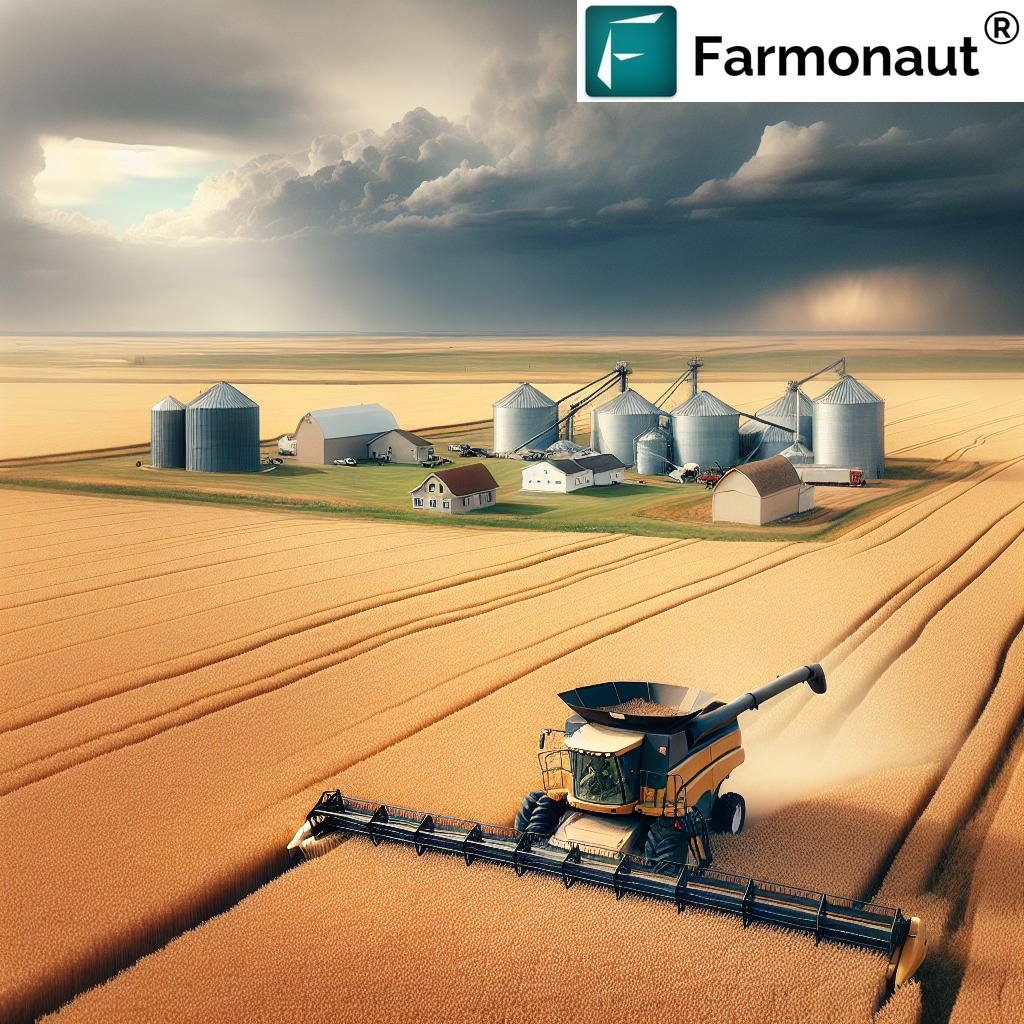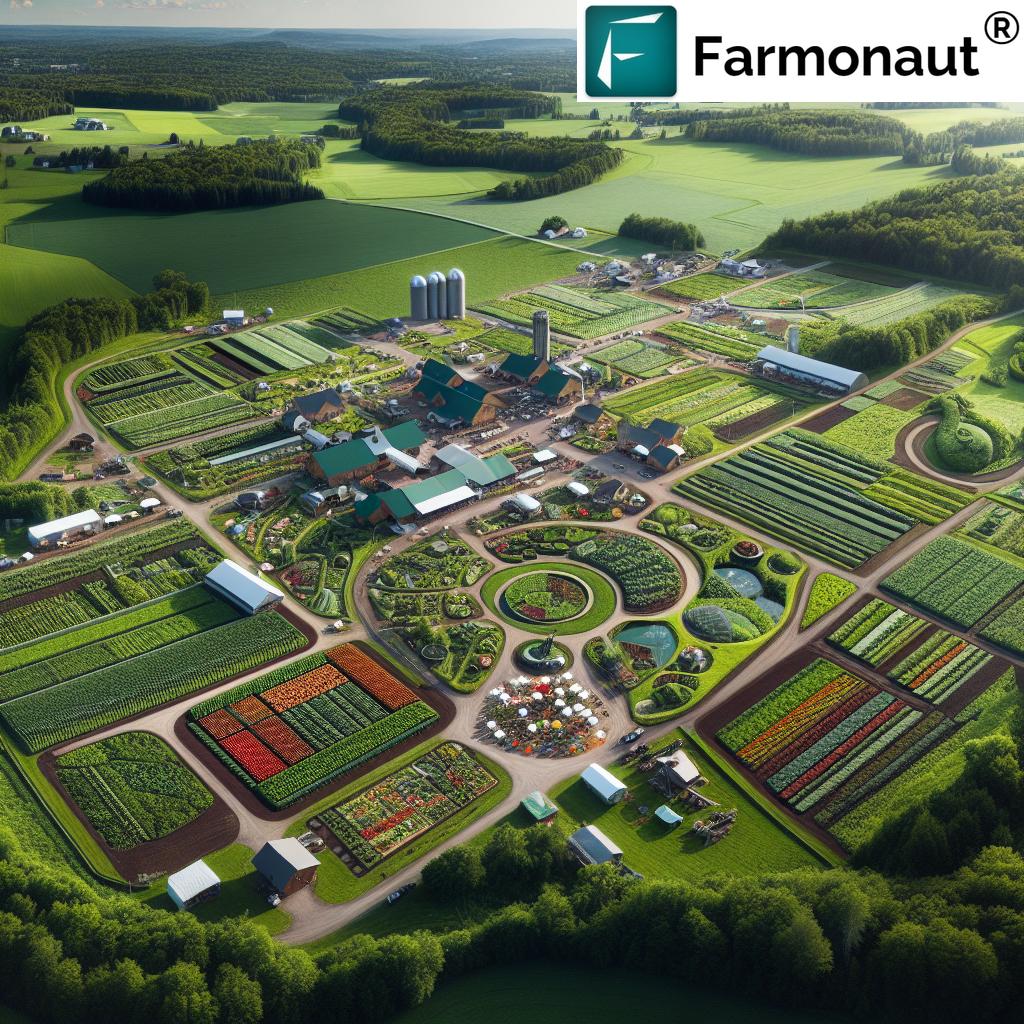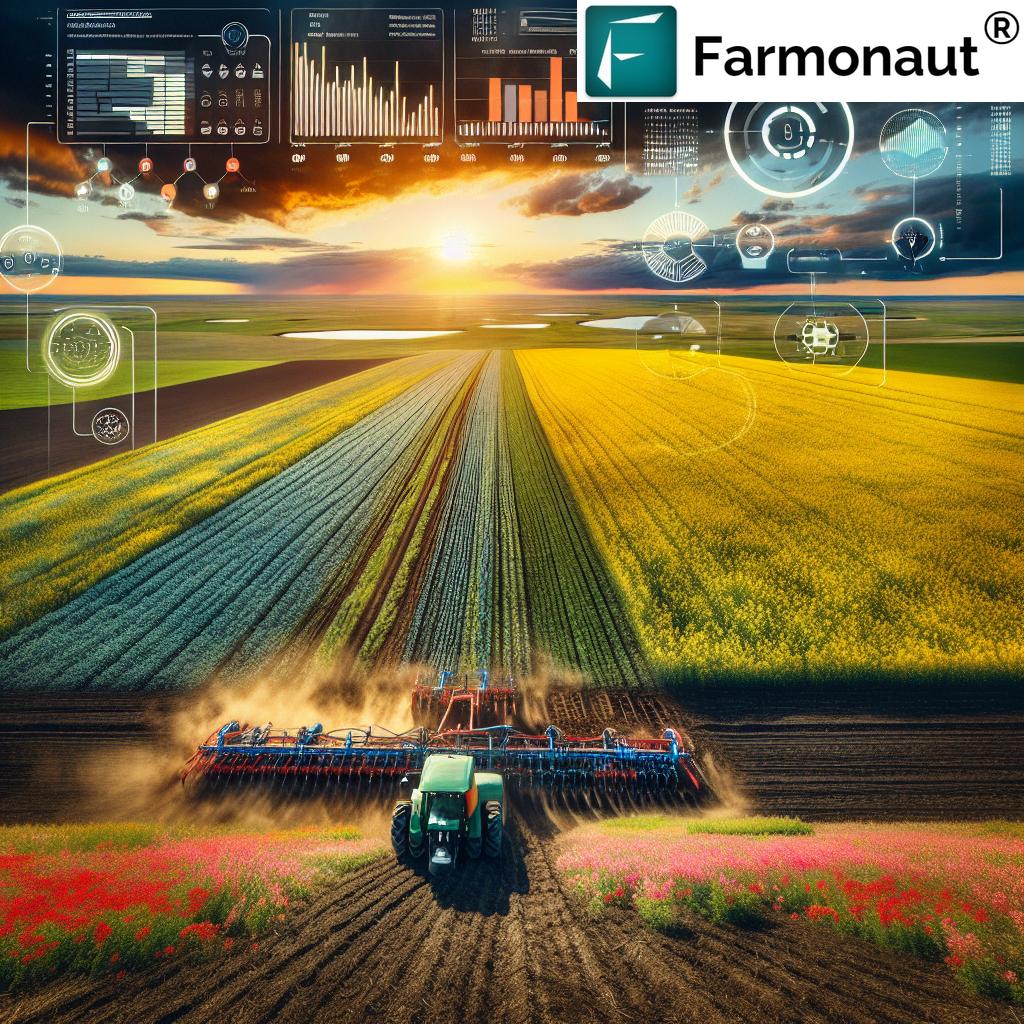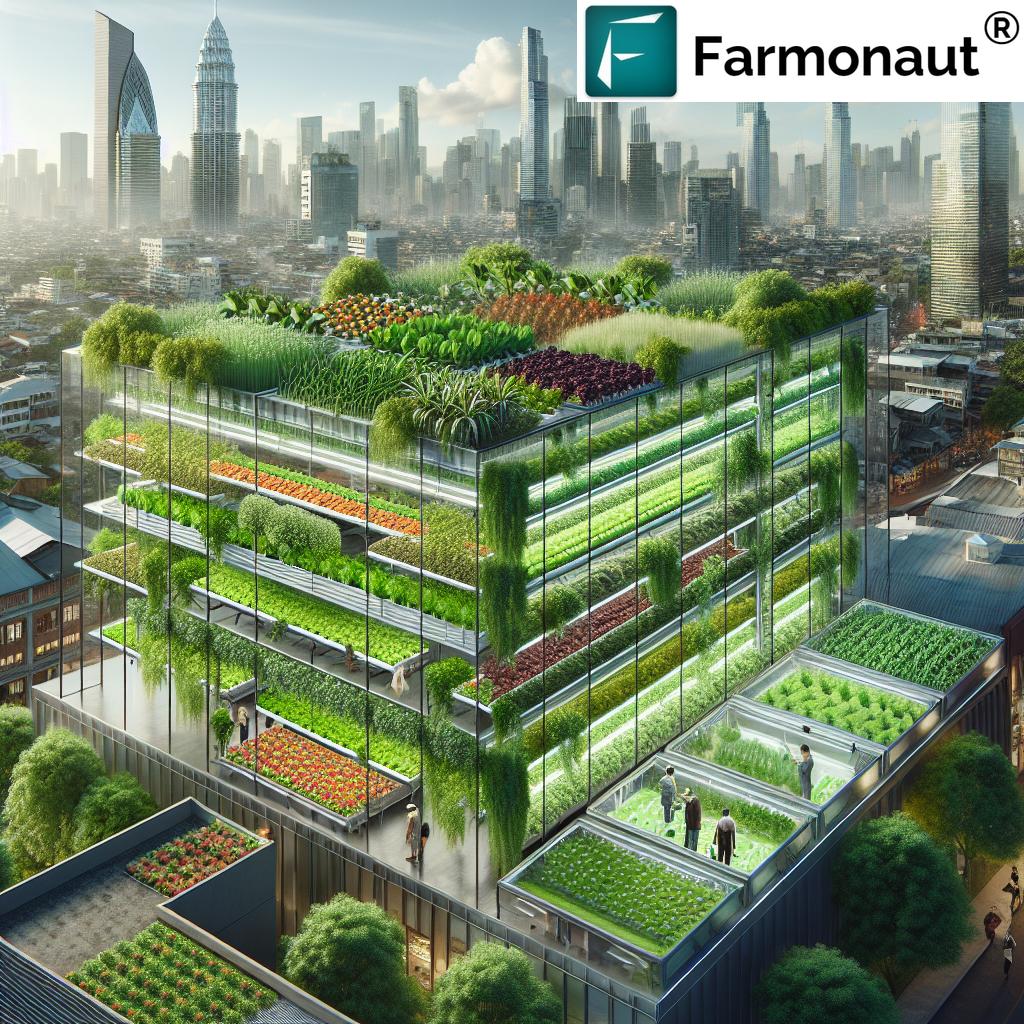Food Security in Canada: 5 Powerful Steps for a Resilient Supply
- Introduction
- Understanding Food Security in Canada
- Canada’s Fruit and Vegetable Sector: A Pillar of Resilience
- 5 Powerful Steps for Sustainable Food Security in Canada
- Comparison Table of Canada’s Food Security Interventions
- The Role of Farmonaut Technologies in Sustainable, Resilient Agriculture
- Government Action and National Food Priorities in Canada (CFIA & PMRA)
- How Canadians & Stakeholders Can Support Food Security
- FAQ on Food Security in Canada
- Conclusion: Building Canada’s Secure, Sustainable Food Future
- Farmonaut Subscription Plans
Introduction
Food security in Canada stands at a pivotal moment. As Canadians, we recognize that a resilient food supply relies on robust agricultural policy Canada, smart government action, and unwavering prioritization of our fruit and vegetable sector. The election of Prime Minister Mark Carney and Liberal Party leadership in Ottawa has fostered renewed hope for policies that strengthen both our food supply chain and national resolve.
Today’s reality, marked by nearly one in eight Canadian households facing food insecurity in 2022, underscores the urgency of safeguarding our domestic food supply. The Fruit and Vegetable Growers of Canada (FVGC) and stakeholders nationwide are urging for comprehensive strategies that address sustainable agriculture in Canada, empower our growers, and position food security as a true national priority.
Understanding Food Security in Canada
What is food security in Canada? At its core, food security means consistent access to sufficient, safe, and nutritious food to maintain a healthy life. For every Canadian family, it’s the foundation for well-being, economic strength, and social stability. Canada’s vast geography, diverse population, and unique agricultural landscape present both challenges and opportunities for building this resilient food supply.
Traditionally, food security was sometimes considered a global challenge, distant from Canadian reality. However, the COVID-19 pandemic, supply chain shocks, and climate disruptions have shown us that no nation is immune. Our food resilience depends on strong domestic food supply, coordinated government action, sustainable resource use, and a future-facing approach to agricultural policy Canada.
- Supply disruptions can quickly shift supermarket shelves and prices.
- Extreme weather can devastate Canadian crops, affecting both local growers and consumers nationwide.
- Policy decisions, from regulation to safety nets, determine how effectively Canada can adapt to evolving food, agricultural, and environmental risks.
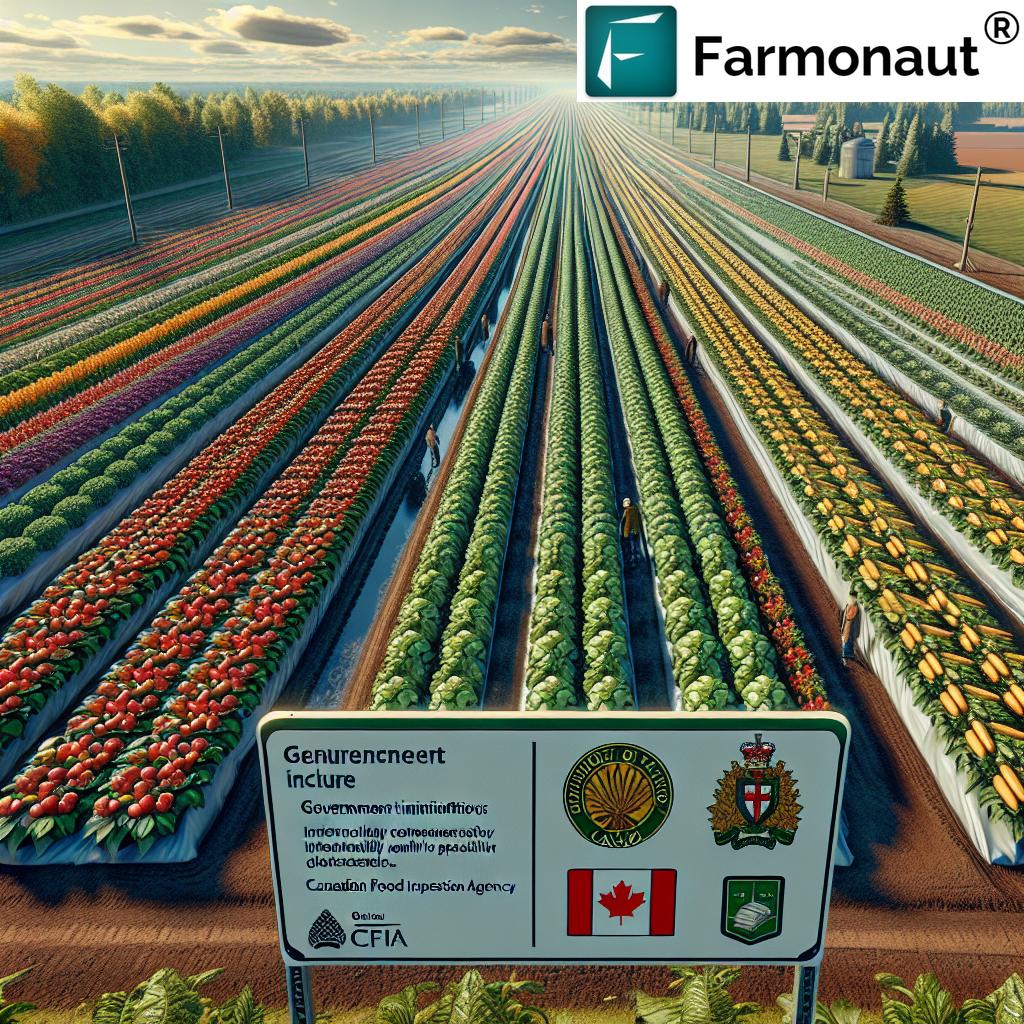
Canada’s Fruit and Vegetable Sector: A Pillar of Resilience
Nowhere is the nexus between food security and national strategy clearer than in Canada’s robust fruit and vegetable sector. This sector, championed by the Fruit and Vegetable Growers of Canada (FVGC), forms the living heart of our food system and sustainable agriculture Canada. Responsible for more than $5 billion in annual economic output, fruit and vegetable growers ensure that nutritious, home-grown options fill Canadian tables and contribute to both health and prosperity.
The FVGC’s commitment to applying a food security lens across all levels of agricultural policy Canada recognizes that every decision—from production incentives to regulatory oversight—can either strengthen or weaken Canada’s ability to feed its people safely, affordably, and sustainably.
- Fruit and vegetable growers produce a diversity of crops, reducing import dependence.
- They innovate continuously to manage pests, adapt to climate extremes, and meet environmental rules.
- Through collective action, the sector is positioned as a champion for resilient food supply and sustainable agriculture Canada.
5 Powerful Steps for Sustainable Food Security in Canada
To achieve true food security in Canada, it’s essential that both national and local actions are rooted in sound agricultural policy, science, and a commitment to competitive, sustainable outcomes for the fruit and vegetable sector and the wider agri-food landscape. FVGC and policy experts have outlined five decisive steps—each interconnected—to help secure our nation’s food future.
Step 1: Strengthen Agricultural Safety Nets & Support for Growers
A fundamental factor in resilient food supply is ensuring that growers have effective safety nets. These mechanisms stabilize income in the face of unexpected climate events, pest outbreaks, and market volatility.
- Crop insurance and stabilization programs—when adequately funded and flexible—provide essential buffers for fruit and vegetable growers across Canada.
- Early government action to review, repair, and modernize these safety nets—such as risk management and disaster relief programs—is critical for sustainable agriculture Canada.
We must ensure incentive structures reward those who implement sustainable practices and cultivate climate resiliency, not just high yield or scale.
For technology-enhanced crop risk assessment and insurance tracing, Farmonaut offers insights with its Crop Loan and Insurance Product, using satellite monitoring to validate claims and enhance trust in the process.
Step 2: Apply a Food Security Lens to National Agencies—CFIA & PMRA
Effective food security in Canada requires integrating a food security perspective into regulatory agencies—primarily, the Canadian Food Inspection Agency (CFIA) and the Pest Management Regulatory Agency (PMRA).
- CFIA ensures Canadian food inspection meets safety, quality, and traceability standards from farm to fork.
- PMRA governs pest management, pesticide approvals, and sustainable use, affecting both grower productivity and consumer safety.
- FVGC advocates for every agency decision to consider the impacts on our domestic food supply Canada: ensuring rules help, not hinder, efforts for a secure, sustainable sector.
Step 3: Empower a Sustainable and Competitive Fruit & Vegetable Sector
The backbone of Canada’s resilient food supply is a thriving fruit and vegetable sector. This requires investment, market opportunities, and innovative tools for every grower.
- Incentives for sustainable farming (e.g., resource-efficient irrigation, integrated pest management, and carbon tracking) help reduce waste and environmental impact while ensuring long-term viability.
- Affordable technology adoption—such as remote satellite monitoring or AI-based advisory—can boost productivity and climate resilience for Canadian growers.
- Farmonaut’s Carbon Footprinting tools allow both large and small farms to monitor and manage emissions, supporting environmental stewardship as part of national food priorities Canada.
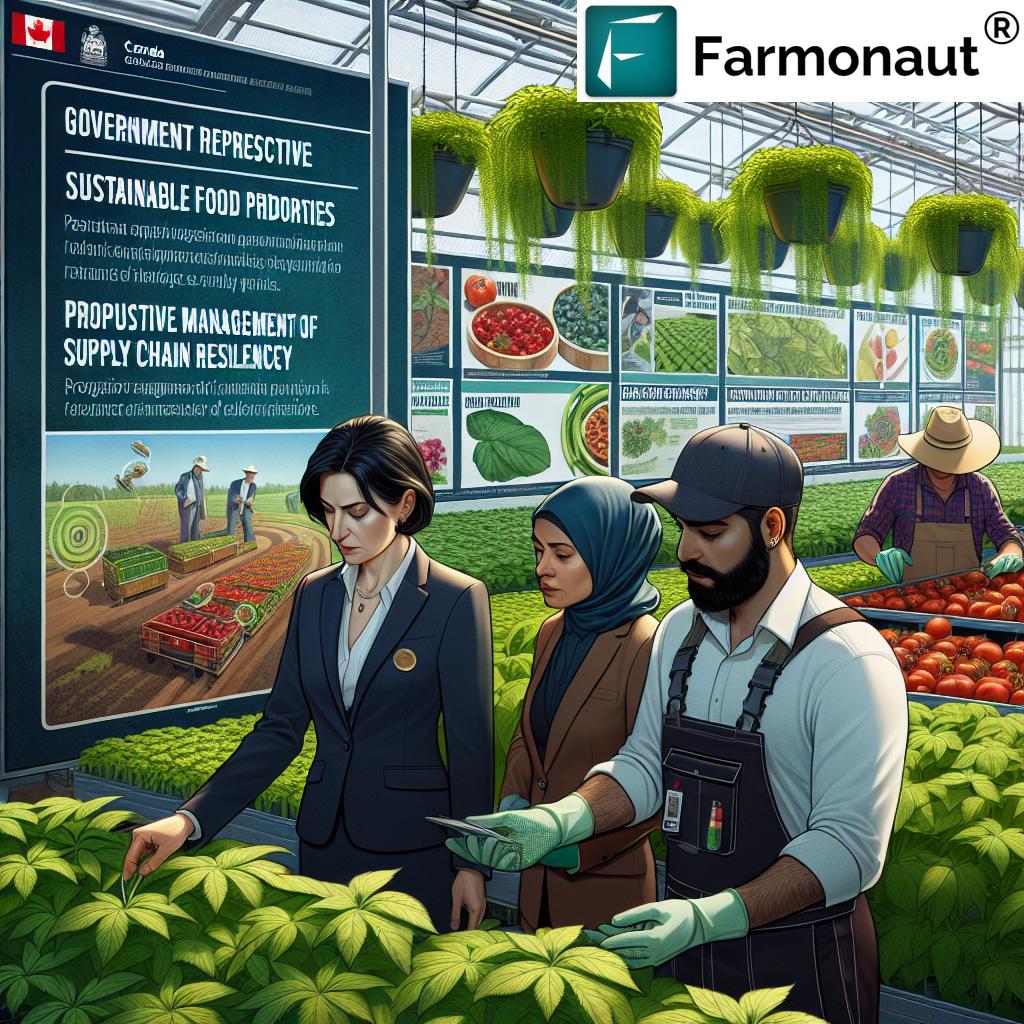
Step 4: Modernizing Food Supply Chains with Traceability and Technology
An end-to-end, resilient food supply demands seamless coordination from producer to consumer. Digitalization, traceability, and logistics optimization are becoming fundamental requirements.
- Blockchain-based traceability platforms—such as Farmonaut’s Product Traceability Solution—provide transparency for every stage of the food supply, bolstering public trust and compliance with evolving regulatory requirements.
- Fleet and resource management, like Farmonaut Fleet Management tools, help fruit and vegetable sector leaders reduce operational costs, carbon emissions, and safety risks.
- Application of precision agriculture and AI-maximized data ensures resource efficiency in domestic food supply Canada, optimizing distribution during emergencies or market shifts.
Efficient, transparent supply chains not only reduce loss and waste, they also protect Canadians from shocks due to global market instability or logistical barriers.
Step 5: Community-Based Resilience Initiatives and Emergency Food Programs
Local engagement, grassroots programs, and emergency interventions play a vital role in buffering food shocks and filling critical gaps. Community-based resilience initiatives—urban gardens, food hubs, and food rescue networks—ensure that every Canadian, urban or rural, can access fresh, affordable food, especially during supply disruptions.
- Strengthening connections between local growers and consumers supports both economic and nutritional security.
- Emergency food programs must be backed by national food priorities Canada—ready to deploy resources and ensure no citizen goes hungry during crisis.
- Government action on food security, supported by powerful digital tools, can target support where need is greatest.
By weaving together these five steps—policy, agency action, sector empowerment, technological modernization, and local resilience—we can ensure that Canada’s food supply is both secure and sustainable for generations.
Comparison Table of Canada’s Food Security Interventions and Their Estimated Impact
| Intervention Name | Description | Estimated Implementation Year | Estimated Percentage Increase in Food Security* | Environmental Sustainability Impact |
|---|---|---|---|---|
| Sustainable Farming Incentives | Government-funded programs rewarding fruit and vegetable growers for adopting water-efficient irrigation, integrated pest management, and climate-smart practices. | 2025 | 8–12% | High |
| Supply Chain Modernization | Technological upgrades including blockchain-based traceability, fleet/resource management, and digitalized trading systems to enhance transparency and reduce waste. | 2024–2027 | 6–10% | High |
| Fruit & Vegetable Sector Support | Targeted investment in R&D and marketing for the Canadian fruit and vegetable sector, with safety net reforms prioritized under federal-agricultural policy Canada. | 2024 | 7–9% | Medium–High |
| Emergency Food Programs | Preparedness measures and rapid-response programs to provide food for vulnerable populations during crises, supported by smart logistics and government action. | 2023–2026 | 4–6% | Medium |
| Community-Based Resilience Initiatives | Grassroots efforts—urban/rural community gardens, food banks, and direct-from-grower sales networks—to enhance local food supply resilience. | 2023–2028 | 5–8% | High |
*Estimated based on expert policy and industry analyses for sector-wide change, not attributable to a single region/group.
The Role of Farmonaut Technologies in Sustainable, Resilient Agriculture
As Canada seeks to lead in sustainable agriculture, modern tools become indispensable. Ensuring food security in Canada means leveraging actionable data and innovation for our growers. Farmonaut, a pioneering agri-technology provider, delivers advanced, satellite-based farm management solutions for everyone—from individual farmers in rural Quebec, to large agribusiness in British Columbia.
How Farmonaut Strengthens Canada’s Domestic Food Supply:
- Satellite-Based Crop Health Monitoring: Farmers access real-time NDVI, soil moisture, and pest pressure analytics, enhancing decision-making and supporting the fruit and vegetable sector with daily insights on Canadian fields.
- Jeevn AI Advisory System: AI-powered recommendations deliver customized, actionable plans tailored to local climate, crop, and market trends—driving up yields and minimizing losses.
- Blockchain-Based Traceability: Transparent records, built into Farmonaut’s system (Traceability Product), protect producers and consumers alike, ensuring every fruit or vegetable grown in Canada is traceable from field to table.
- Fleet and Resource Management: The Fleet Management Module elevates operational efficiency for agribusinesses, reducing delays and environmental impact in domestic food supply Canada.
- Carbon Footprint Tracking: With the Carbon Footprinting application, Canadian growers can monitor and minimize emissions, fulfilling both sustainability commitments and regulatory requirements.
- API Access and Integration: Developers, research institutions, and cooperatives in Canada can connect directly to Farmonaut’s API for seamless integration of satellite, crop, and weather data into their systems. Read our API developer documentation to get started.
What sets Farmonaut apart is affordability and accessibility—a mission to democratize precision agriculture so every Canadian grower, no matter the scale, is empowered to adapt, compete, and thrive.
For those managing larger organizations or regional agri-enterprises, Farmonaut’s Large-Scale Farm Management suite delivers holistic operations dashboards, monitoring dozens or hundreds of fields with a few clicks.
Government Action and the Role of Regulatory Agencies in Food Security
Recent developments in Ottawa underscore the national importance of government action on food security. The FVGC’s advocacy has prompted both the Canadian Food Inspection Agency (CFIA) and the Pest Management Regulatory Agency (PMRA) to embrace a food security lens across policies.
How Does This Impact Canadian Food Security?
- CFIA ensures Canadian food inspection protocols remain world-leading, facilitating efficient trade, upholding safety, and enhancing Canadian consumer confidence.
- PMRA balances pest management needs of growers with environmental and public health priorities, enabling safe productivity improvements that protect both people and ecosystems.
- Application of food security lens: Every regulatory or industry rule is analyzed for its effect on domestic food supply Canada—preventing unintended harms and safeguarding national food priorities Canada.
Actions already underway:
- Modernization of pest management tools and approvals, reflecting science and international best practices.
- Accelerated review of agricultural safety nets to align features with actual risk scenarios encountered by fruit and vegetable growers.
- Deployment of digital traceability protocols, utilizing blockchain and satellite data to verify Canadian-grown products for export and home markets alike.
For policy-makers and stakeholders, the key is early, transparent engagement, ongoing evaluation, and a steadfast commitment to placing food security at the centre of regulatory, investment, and program decisions.
How Canadians & Stakeholders Can Support Food Security
Achieving resilient food supply in Canada involves every facet of the value chain—from field to fork. Here’s how we, as growers, agribusinesses, researchers, and consumers, can champion national food priorities Canada:
- Growers: Adopt sustainable, data-driven practices, utilize precision agriculture technologies, and participate in local/national food system planning discussions.
- Agribusinesses: Invest in resource-efficient operations, integrated logistics, and traceability systems that protect brand and enhance supply chain security.
- Policy Makers and Agencies: Place food security at the core of each decision, actively consult with FVGC and sector leaders, and fund innovation pilots that address real-world grower needs.
- Consumers: Support Canadian-grown produce and remain informed about the journey, sustainability, and safety of the food you buy.
We all share responsibility for sustaining the fruit and vegetable sector—because without it, there can be no lasting food security in Canada.
FAQ on Food Security in Canada
-
Q1: What makes the fruit and vegetable sector critical to Canada’s food security?
A strong fruit and vegetable sector reduces reliance on imports, promotes crop diversity, boosts national nutrition, and provides resilience against food system shocks. -
Q2: How do CFIA and PMRA contribute to food security?
CFIA safeguards food safety and inspection, while PMRA ensures science-based, sustainable pest management. Both now apply a “food security lens” to support resilient domestic supply. -
Q3: What is a food security lens?
It’s a decision-making approach that reviews every policy and regulation for its impacts on: national food supply, accessibility, grower viability, and long-term sustainability. -
Q4: How can technologies like Farmonaut aid the Canadian agriculture sector?
They provide affordable satellite insights, enable climate-smart decisions, enhance transparency, and support farmer resilience—empowering every level of the food value chain. -
Q5: What can consumers do to strengthen Canada’s food security?
Choose local Canadian-grown fruits and vegetables, advocate for sustainable policy, and stay informed about food system challenges and successes.
Conclusion: Building Canada’s Secure, Sustainable Food Future
Food security in Canada is not a static target, but a dynamic journey—demanding strategic vision, collaborative action, and ongoing adaptation from every stakeholder. As we congratulate the new government, we echo the FVGC’s call for urgent, coordinated policy and robust support for the fruit and vegetable sector.
The five steps highlighted here—from repairing safety nets to empowering digital traceability, applying food security lenses to agencies, supporting producers, and driving community resilience—represent a comprehensive roadmap. Success will require:
- Continuous, transparent collaboration between Ottawa, FVGC, CFIA, PMRA, growers, and consumers.
- Widespread adoption of affordable, advanced technologies—such as those from Farmonaut—to modernize the fruit and vegetable sector.
- A unified vision of sustainability, competitive agriculture, and national food priorities Canada.
This is our generation’s opportunity—to secure nutritious food for every Canadian, empower our growers, and build a sustainable, competitive, and resilient food system. Together, we can make food security not just a policy goal, but a lasting Canadian legacy.






